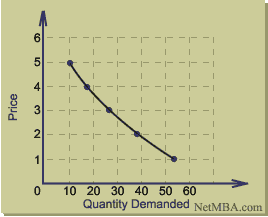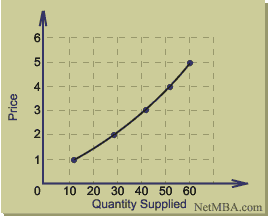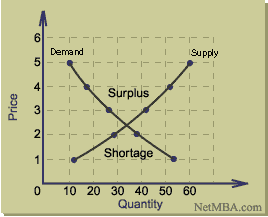Instead, you'll see stalls selling cups and cups of hot chocolate and hot coffee. Yummy!
Well.. why so?
The stall owners know that people's demand for hot chocolate and coffee is high during winter, compared to their demand for cold drinks. They're just meeting people's demands to get the most out of the profit they can make.
In short, the market's demand for certain products determines how much the suppliers produce.
The definition of demand is, "the quantity of a certain product that consumers are willing to buy at a given price".
Whereas the definition of supply is, "the quantity of a certain product that suppliers will make available to the market at a particular price".
There are two simple rules to demand and supply.
The higher the price of a product, the lower the demand will be.
When we plot a graph, it'll look like this:
Oppositely, the higher the price of a product, the higher the supply will be.
When we plot a graph, we'll get this:
And this is the supply curve.
When we combine both the curves, we'll get...
Since those who demand and those who supply have opposite theories, how do they decide which price to set for products?
This is where it leads us to the term equilibrium price.
Equilibrium price is where the demand and supply curves meet. There is no surplus nor shortage.
"It is a state of balance between market demand and supply," Geoff Riley defines.
Since the equilibrium price is affected by the changes in demand and supply, what affects demand and supply?
The answer will be revealed in the next blog post.
Stay tuned!
Bibliography:
Demand, Supply, and
Market Equilibrium. 22 December 2012
<http://www.prenhall.com/behindthebook/0132447029/pdf/O'Sullivan_CH03.pdf>.
Riley, Geoff. Finding an equilibrium price. 23
September 2012. 22 December 2012 <http://www.tutor2u.net/economics/revision-notes/as-markets-equilibrium-price.html>.
The Times 100: Business Case Studies. Marketing Theory.
22 December 2012
<http://businesscasestudies.co.uk/business-theory/marketing/demand-and-supply.html#axzz2E7WziFyM>.








